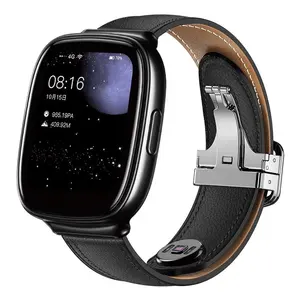Phổ biến trong ngành của bạn

Hpdbl1b20 2024 nhà máy 20W/30W/50W 100W laser cầm tay đánh dấu và Máy khắc cho kim loại Acrylic vv mẫu thử nghiệm
Sẵn sàng vận chuyển
4.800,00 US$ - 5.000,00 US$
Đơn hàng tối thiểu: 1 Cái
Vận chuyển mỗi chiếc: 154,44 US$


Hpdbe1b520 giá tốt cầm tay Dot peen vin số đánh dấu kim loại Máy khắc
Sẵn sàng vận chuyển
1.900,00 US$ - 2.000,00 US$
Đơn hàng tối thiểu: 1 Cái
Vận chuyển mỗi chiếc: 58,60 US$


Mishi 1325 1530 2040 gỗ CNC Router 8x4ft khắc gỗ 3D máy khắc cho cửa tủ làm CNC Router máy
2.250,00 US$ - 2.580,00 US$
Đơn hàng tối thiểu: 1 Bộ
Vận chuyển mỗi chiếc: 1.200,00 US$


Phổ biến gỗ CNC Khắc Máy Router 1325 chế biến gỗ CNC Router khắc giá máy
2.010,00 US$ - 2.360,00 US$
Đơn hàng tối thiểu: 1 Bộ
Vận chuyển mỗi chiếc: 600,00 US$


Sợi Laser đánh dấu Máy khắc sâu cho khuôn kim loại bề mặt đánh dấu 50W 60W 80W 100W
1.250,00 US$ - 3.200,00 US$
Đơn hàng tối thiểu: 1 Bộ


Bộ Định Tuyến Cnc 3020T 3d Vòng Gỗ Gạch Đá Cẩm Thạch Trang Sức Đồng Xu Đá Kim Loại Vàng Mini Máy Khắc Cnc
Sẵn sàng vận chuyển
505,00 US$ - 525,00 US$
Đơn hàng tối thiểu: 2 Bộ
Vận chuyển mỗi chiếc: 253,72 US$

Giấy Chứng Nhận Ce Vỏ Điện Thoại Di Động Bằng Gỗ Máy Khắc Laser Gạch 4060 Máy Khắc Laser Súng
1.250,00 US$ - 1.400,00 US$
Đơn hàng tối thiểu: 1 Bộ

Máy Khắc Laser Acrylic Bán Chạy/Máy Khắc Laser Gạch/Máy Cắt Laser Diện Tích Lớn
1.550,00 US$ - 1.650,00 US$
Đơn hàng tối thiểu: 1 Bộ

Giá Rẻ Gạch Máy Khắc Laser 6040 Laser Cắt Trò Chơi Ghép Hình Câu Đố Nhỏ 4030 Tông Tia Laser Cắt Mach
700,00 US$ - 730,00 US$
Đơn hàng tối thiểu: 1 Bộ

Granite Gạch Thủy Tinh Bằng Đá Sa Thạch Gạch Và Đá Cẩm Thạch Đá 3D CNC Router Máy Khắc 1825
6.881,00 US$ - 11.100,00 US$
Đơn hàng tối thiểu: 1 Bộ


3d 3 Trục Antique Brick Chế Biến Gỗ Khắc Khắc Cnc Router Máy
5.390,00 US$ - 5.940,00 US$
Đơn hàng tối thiểu: 1 Bộ

Giấy chứng nhận Ce bằng gỗ điện thoại di động Trường hợp gạch máy khắc laser 4060 súng máy khắc laser
1.500,00 US$ - 1.800,00 US$
Đơn hàng tối thiểu: 1 Bộ

Đá Cẩm Thạch CNC 5 trục máy bay phản lực nước đá Máy cắt gạch tác động Máy khắc cho đá cẩm thạch Máy cắt đá granite
32.000,00 US$ - 43.000,00 US$
Đơn hàng tối thiểu: 1 Bộ
Vận chuyển mỗi chiếc: 51,09 US$

25% giảm giá CNC Router 3020 3D Vòng gỗ gạch đá cẩm thạch trang sức Đồng Xu Đá kim loại vàng mini CNC Khắc Máy
Sẵn sàng vận chuyển
1.000,00 US$
Đơn hàng tối thiểu: 10 Bộ
Vận chuyển mỗi chiếc: 400,00 US$

30% giảm giá! Đa-Mục Đích CNC Router 2030 3D Vòng Gỗ Gạch Đá Cẩm Thạch Đồ Trang Sức Đồng Xu Đá Kim Loại Vàng Mini CNC Khắc Máy
2.000,00 US$
Đơn hàng tối thiểu: 3 Bộ
Vận chuyển mỗi chiếc: 499,92 US$

29% giảm giá!! Đa-Mục Đích CNC Router 2030 3D Vòng Gỗ Gạch Đá Cẩm Thạch Đồ Trang Sức Đồng Xu Đá Kim Loại Vàng Mini CNC Khắc Máy
1.000,00 US$
Đơn hàng tối thiểu: 10 Bộ

Chất lượng cao CNC Slim kim loại mặt dây chuyền Laser đánh dấu gạch đá thép không gỉ Máy khắc
Sẵn sàng vận chuyển
1.199,00 US$ - 1.320,00 US$
Đơn hàng tối thiểu: 1 Bộ
Vận chuyển mỗi chiếc: 147,05 US$

Giảm giá 17%! nhôm Apple trường hợp đồng hồ trở lại súng thùng thủy tinh Nước gạch chai rượu vang máy khắc laser
800,00 US$
Đơn hàng tối thiểu: 10 Bộ
Vận chuyển mỗi chiếc: 0,00 US$

Đá Granite Cầu Saw 5 Trục CNC Đá Khắc Máy Cho Đá Cẩm Thạch
5.960,00 US$
Đơn hàng tối thiểu: 1 Bộ
Vận chuyển mỗi chiếc: 0,00 US$

Tự Động Cnc 5 Trục Cầu Saw Granite Đá Cẩm Thạch Máy Cắt Giá
5.000,00 US$
Đơn hàng tối thiểu: 1 Bộ
Vận chuyển mỗi chiếc: 0,00 US$

60W 80W Co2 Cnc Máy Cắt Laser Nhỏ 600Mm * 900Mm Gỗ Gạch Laser Máy Cắt Và Khắc Giá
1.200,00 US$ - 2.000,00 US$
Đơn hàng tối thiểu: 1 Bộ

Máy Cắt Đá/Đá Granite Đa Năng Bán Chạy/Đá Cẩm Thạch/Gạch Chịu Lửa/Terrazzo/Máy Cắt Gạch Men
600,00 US$ - 680,00 US$
Đơn hàng tối thiểu: 1 Cái

Gỗ/MDF/Acrylic/Giấy/Da/Vải/Cao Su/Gạch/PVC Khắc Laser Và máy Cắt 6040 80W
1.100,00 US$ - 1.150,00 US$
Đơn hàng tối thiểu: 1 Bộ


HC30 nóng bán nhân tạo lát thạch anh đá cẩm thạch máy làm gạch
3.500,00 US$ - 4.500,00 US$
Đơn hàng tối thiểu: 1 Bộ

Máy Cắt Đá Kết Hợp Nhiều Lát Cắt Nhỏ XD300-8A/8B Và Máy Cắt Gạch Khảm Máy Cắt Đá Nhiều Lưỡi
4.728,00 US$ - 4.788,00 US$
Đơn hàng tối thiểu: 2 Bộ

Máy Cắt Gạch Chất Lượng Cao Máy Cắt Gạch Gốm Chuyên Nghiệp
799,00 US$ - 999,00 US$
Đơn hàng tối thiểu: 1 Bộ

Đa mục đích cnc router 2030 3d nhẫn gỗ gạch đá cẩm thạch jewelry coin đá kim loại vàng nhỏ máy khắc cnc giá
1.250,00 US$ - 1.450,00 US$
Đơn hàng tối thiểu: 1 Bộ

Di động paver gạch Splitter khối bê tông Splitter gạch Cutter Máy cắt
600,00 US$
Đơn hàng tối thiểu: 1 Bộ

Sihao Máy Để Bán
Sẵn sàng vận chuyển
500,00 US$ - 577,00 US$
Đơn hàng tối thiểu: 1 Bộ
Vận chuyển mỗi chiếc: 181,60 US$

5 Trục CNC Đá Cẩm Thạch Cầu Saw Máy Cắt Với Ý Pegasus Hệ Thống 3D Đá Profiling Khắc Chức Năng Để Bán
52.500,00 US$ - 55.000,00 US$
Đơn hàng tối thiểu: 1 Bộ
Vận chuyển mỗi chiếc: 3.300,00 US$

Chất lượng cao Máy cắt gạch lề đường Máy cắt đá để bán
800,00 US$ - 990,00 US$
Đơn hàng tối thiểu: 1 Đơn vị

Giá nhà máy bán đá cẩm thạch granite syntec simumerik hệ thống điều khiển máy khoan cnc
7.000,00 US$ - 9.000,00 US$
Đơn hàng tối thiểu: 1 Bộ

Chất Lượng Tốt 7.5KW Nước Làm Mát Trục Chính 1224 3D CNC Router Tombstone Và Tượng Đài Máy Cắt Đá
8.300,00 US$ - 8.400,00 US$
Đơn hàng tối thiểu: 1 Bộ



Bcam đá Khắc Máy di tích mộ đá Khắc Máy cầu Saw loại CNC đá Máy cắt cho marb
30.500,00 US$
Đơn hàng tối thiểu: 1 Bộ

Các danh mục hàng đầu
Giới thiệu về máy khắc gạch
Ngày nay, máy khắc gạch không còn là điều mới mẻ đối với những người bình thường và không còn bị coi là điều cấm kỵ khi sử dụng. Nếu bạn đang tìm kiếm niềm vui áp chót đó, bạn phải kiểm tra sự bao la. Bộ sưu tập máy khắc gạch tại Alibaba.com. Những gợi cảm và cong. máy khắc gạch đáng giá từng xu và chắc chắn làm cho đêm đó trở nên đặc biệt đối với bạn. Những con búp bê này có ngoại hình giống như thật, bắt đầu từ tóc đến ngón chân theo mọi nghĩa.
Cho dù bạn là một người cô đơn đang tìm kiếm một người bạn đời như cuộc sống hay một cặp vợ chồng muốn thêm gia vị cho cuộc sống của họ, bạn đều có thể sử dụng chúng . máy khắc gạch để đốt cháy ngọn lửa đó. Những ngoạn mục. máy khắc gạch có thể tùy chỉnh theo mong đợi của bạn. Những điều tuyệt vời. máy khắc gạch có sẵn ở cả phiên bản dành cho nam và nữ và được làm từ silicone cấp y tế để sử dụng an toàn. Hãy sở hữu ngay bây giờ và tận hưởng một đêm đam mê và cháy bỏng.
Alibaba.com cung cấp những điều tuyệt vời này. máy khắc gạch ở mọi hình dạng cơ thể, kích thước và sắc tộc. Dù yêu cầu của bạn đối với. máy khắc gạch, bạn có thể tải tất cả chúng trên trang web. Những cái này. máy khắc gạch được tạo hình bởi những người thợ thủ công giỏi nhất và mọi chi tiết phức tạp đều được kiểm tra kỹ lưỡng. Những con búp bê này có mắt, tóc, móng tay và tất cả các bộ phận cơ thể khác tương tự như người thật.
Alibaba.com cung cấp nhiều loại. máy khắc gạch có thể giúp bạn mua các sản phẩm phù hợp với ngân sách và các yêu cầu khác của bạn. Các sản phẩm này an toàn để sử dụng, được chứng nhận và thân thiện với môi trường trong tự nhiên. Đơn đặt hàng OEM có sẵn trên các sản phẩm này.
Cho dù bạn là một người cô đơn đang tìm kiếm một người bạn đời như cuộc sống hay một cặp vợ chồng muốn thêm gia vị cho cuộc sống của họ, bạn đều có thể sử dụng chúng . máy khắc gạch để đốt cháy ngọn lửa đó. Những ngoạn mục. máy khắc gạch có thể tùy chỉnh theo mong đợi của bạn. Những điều tuyệt vời. máy khắc gạch có sẵn ở cả phiên bản dành cho nam và nữ và được làm từ silicone cấp y tế để sử dụng an toàn. Hãy sở hữu ngay bây giờ và tận hưởng một đêm đam mê và cháy bỏng.
Alibaba.com cung cấp những điều tuyệt vời này. máy khắc gạch ở mọi hình dạng cơ thể, kích thước và sắc tộc. Dù yêu cầu của bạn đối với. máy khắc gạch, bạn có thể tải tất cả chúng trên trang web. Những cái này. máy khắc gạch được tạo hình bởi những người thợ thủ công giỏi nhất và mọi chi tiết phức tạp đều được kiểm tra kỹ lưỡng. Những con búp bê này có mắt, tóc, móng tay và tất cả các bộ phận cơ thể khác tương tự như người thật.
Alibaba.com cung cấp nhiều loại. máy khắc gạch có thể giúp bạn mua các sản phẩm phù hợp với ngân sách và các yêu cầu khác của bạn. Các sản phẩm này an toàn để sử dụng, được chứng nhận và thân thiện với môi trường trong tự nhiên. Đơn đặt hàng OEM có sẵn trên các sản phẩm này.












